When it comes to reading, teachers are a little like Goldilocks. When it comes to spotting difficult texts – whether it is the class reader in year 5, or a maths word problem at GCSE – teachers know what is too easy, what is too hard, and what is just right for their pupils.
However, the reality is that teachers do not get to calibrate the degree of reading difficulty in the school curriculum. Indeed, the latest iteration of national qualifications and subject specifications has seen the bar raised regarding reading requirements. Whether it is reading about Dead Dodo’s in the KS2 SATs, or the sheer breadth of reading skill required for 30 hours of GCSE exam reading and writing, the reading demand on pupils is as high as it has been for decades.
Given the reading challenge of the academic curriculum, every teacher benefits from recognising exactly what typically makes for a difficult text for their pupils. With some targeted training on reading, every teacher would be even more informed as they mediate reading with their pupils.
What makes school texts particularly tricky?
For many a secondary science teacher, they can recognise the difficulty of a textbook chapter for their pupils, but they may not be able to break-down exactly why it is hard. Therefore, opportunities may be missed to teach their pupils to read complex texts (this AQA guide on how they write exam questions for readability is very helpful for all).
Take a look at this science textbook extract:
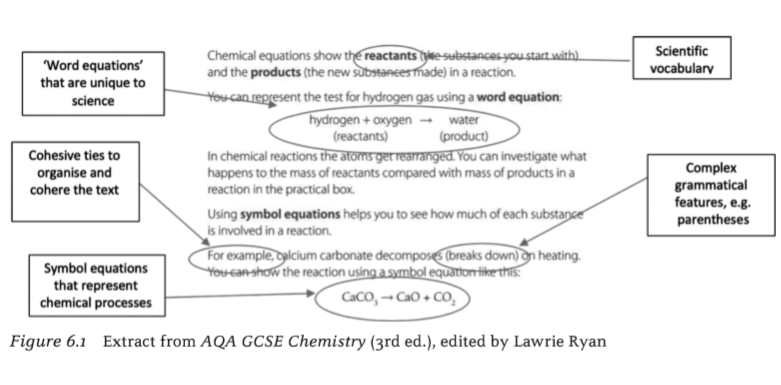
Quite clearly, this text is tricky with multiple features that make it challenging to comprehend. For an expert science teacher – so well-versed in the academic language of science, some of the specific complexities for a novice reader may be missed. Clearly, vocabulary, grammar, along with specific text features all need careful navigation.
For pupils, if we are more explicit about what makes academic reading particularly complex, teachers can be clearer when mediating tricky texts. Teachers can better help their pupils to spot common patterns and hurdles in academic reading – both in subject specific texts and with general sophisticated reading materials. Pupils can become more strategic and active readers (reading metacognitively).
To synthesise the main features that determine text difficulty, I devised the simple taxonomy of the ‘Arduous Eight’:
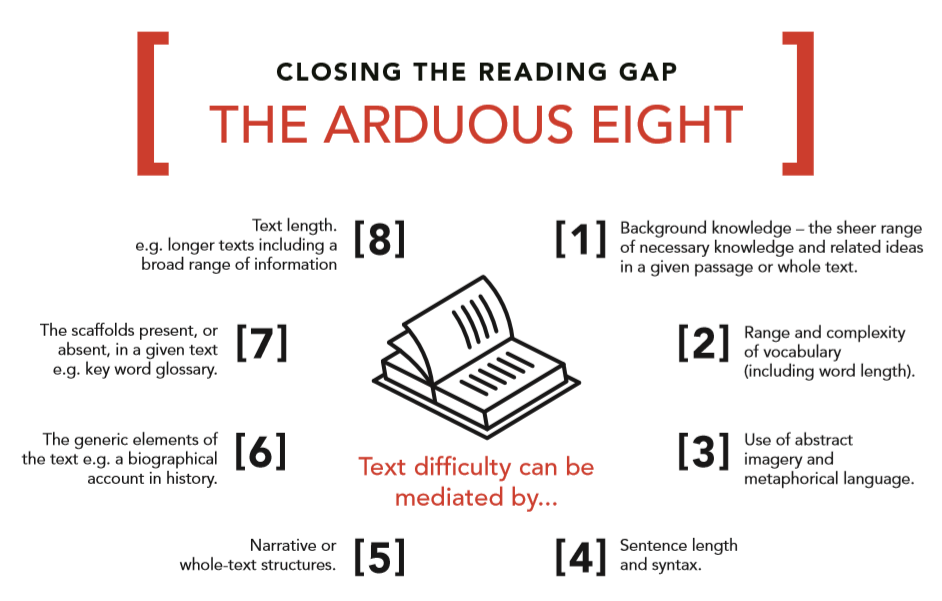
You can use the ‘Arduous Eight’ to frame discussions about text difficulty and text selections, so that our curriculum is better mediated with a Goldilocks degree of difficulty: difficult, but just right.
Compare the following two texts: ‘To the Lighthouse’, a complex literary text for older readers, along with an informational science text for KS2/KS3 pupils:
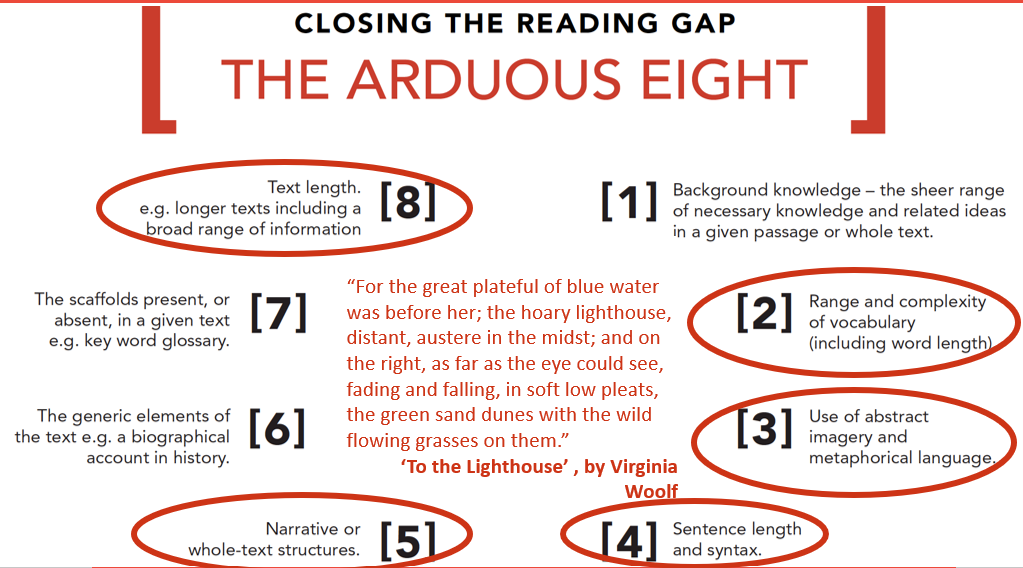
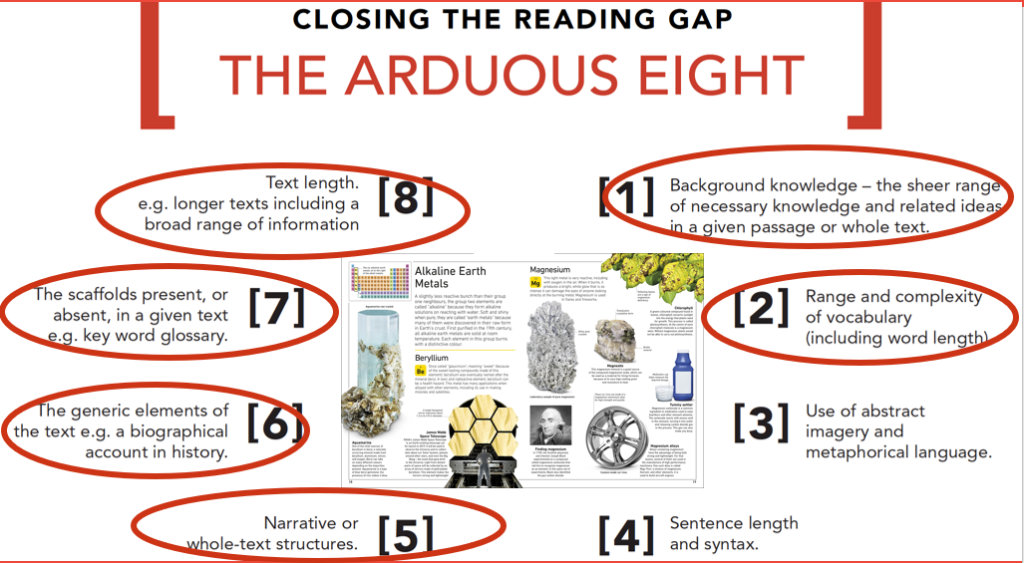
You can debate which of the ‘Arduous Eight’ features or present for any text – or those that prove most significant for text difficulty. Such discussion would no doubt help make for quality curriculum decisions. As curriculum is so key, we must remember that every pupil has to skilfully read if they are to navigate it successfully.
Simply spotting the features of text difficulty won’t go all the way to making reading accessible for pupils. Not only that, the reading difficulty of a text is of course always mediated by what the pupil knows and their past reading experience. And yet, the ‘Arduous Eight’ is a helpful approach to begin taking on the challenge of helping pupils successfully grapple with tricky texts.
You can read more more about teaching reading and mediating the reading challenge by picking up ‘Closing the Reading Gap’. See:
Routledge: see HERE
Amazon: see HERE (It keeps selling out, but deliveries are being sent fast regardless)
Find my other CTRG Resources on the resource page HERE.


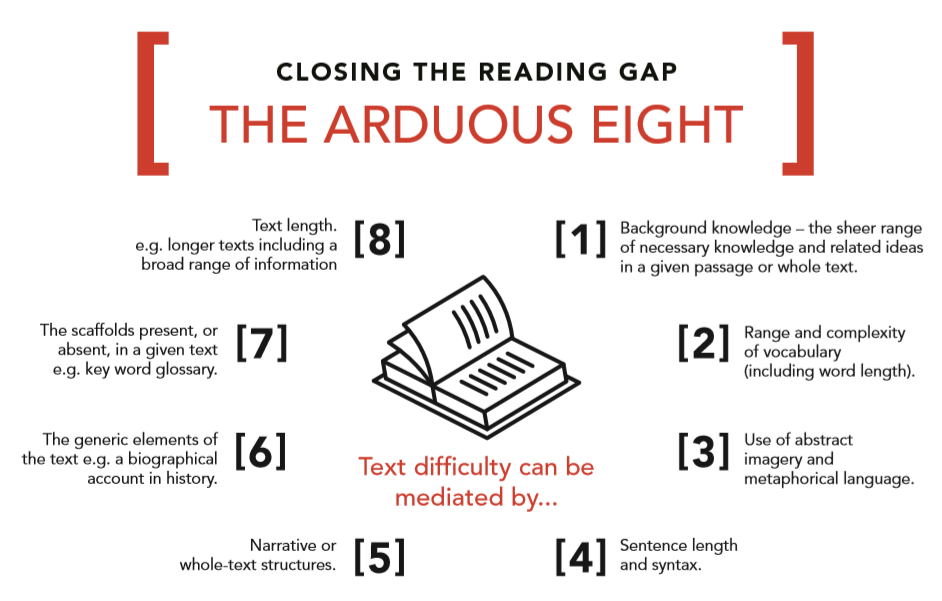



Comments